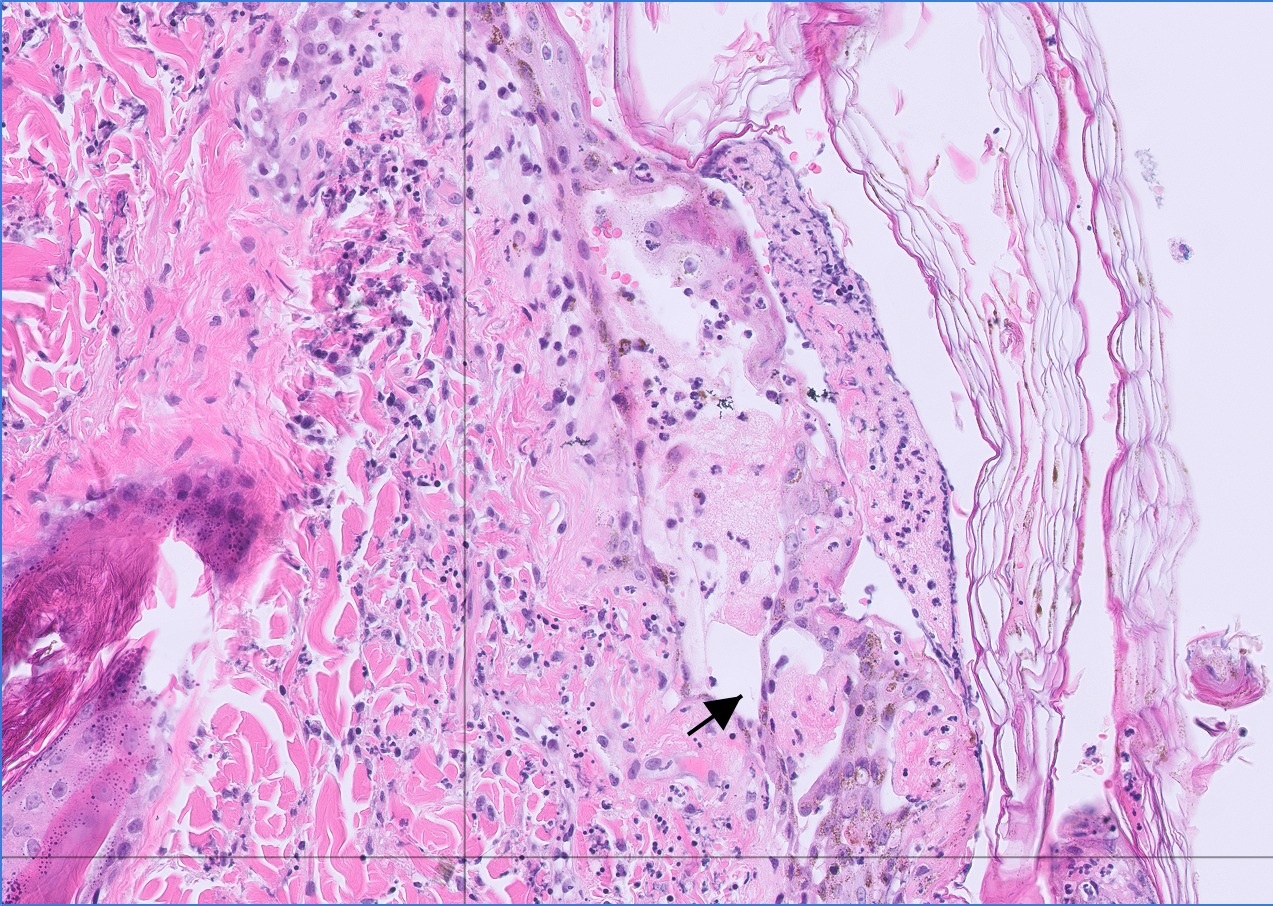Michael Hardcastle
It has been said that “dogs never die from skin disease, but only itch forever”, however there are a few dermatological conditions that are linked to serious systemic lesions. One of them is a rare syndrome seen exclusively in Miniature Schnauzers, a case of which was recently suspected at Awanui Veterinary, Auckland.
Clinical history
The patient was a 7-year-old male, neutered, Miniature Schnauzer with a history of calcium oxalate crystalluria (managed with citrate and hydrochlorothiazide) and hypertriglyceridaemia (managed with bezafibrate).
He had a three-week history of crusted, scabby lesions on the pinnae (responsive to cleaning with chlorhexidine), and then within the week before biopsy developed new crusted and ulcerative lesions around the eyes, on the bridge of the nose, on the ventral aspect of all four feet adjacent to the pads, on both elbows and on the tail tip.
The veterinarian also noted liver enzymes seemed to have increased since the skin lesions developed, with ALP 620 U/L, ALT 352 U/L, AST 81 U/L and CK 998 U/L, and the dog was intermittently pyrexic.
Clinical images were sent (Figures 1, 2 and 3). The feet, tail, nose and elbow were biopsied.
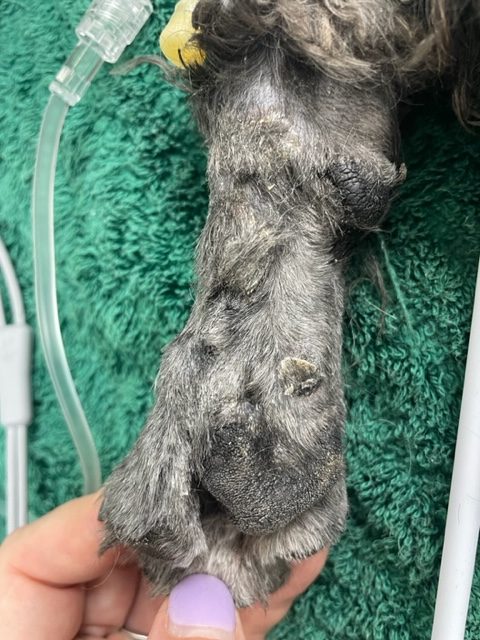
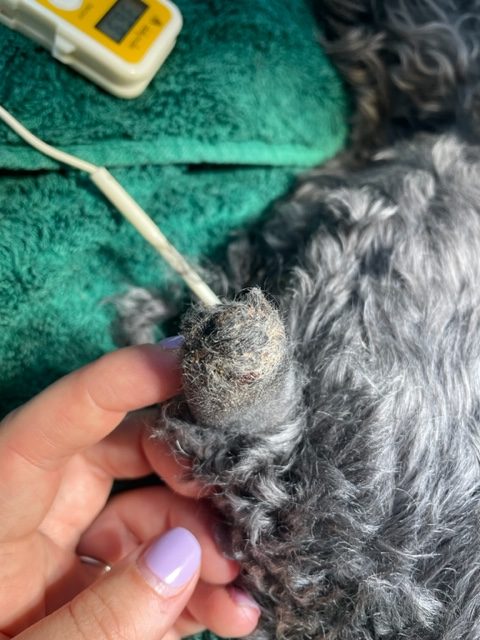
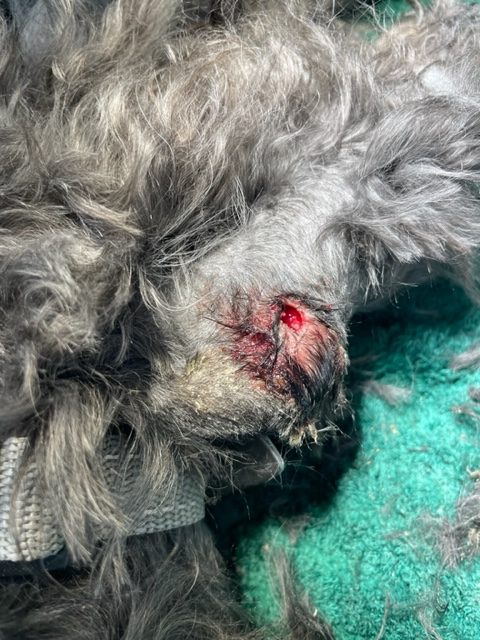
Figures1, 2 and 3 – Lesions on feet, tail and elbow.
Laboratory findings
Sections from all sites were characterised by epidermal hyperplasia or erosion to ulceration, with some areas of hyperkeratosis, variable intraepidermal oedema, and sometimes epidermal detachment from the dermis, clefting or vesiculation (Figure 4). Mixed, predominantly neutrophilic inflammation was seen alongside these changes.
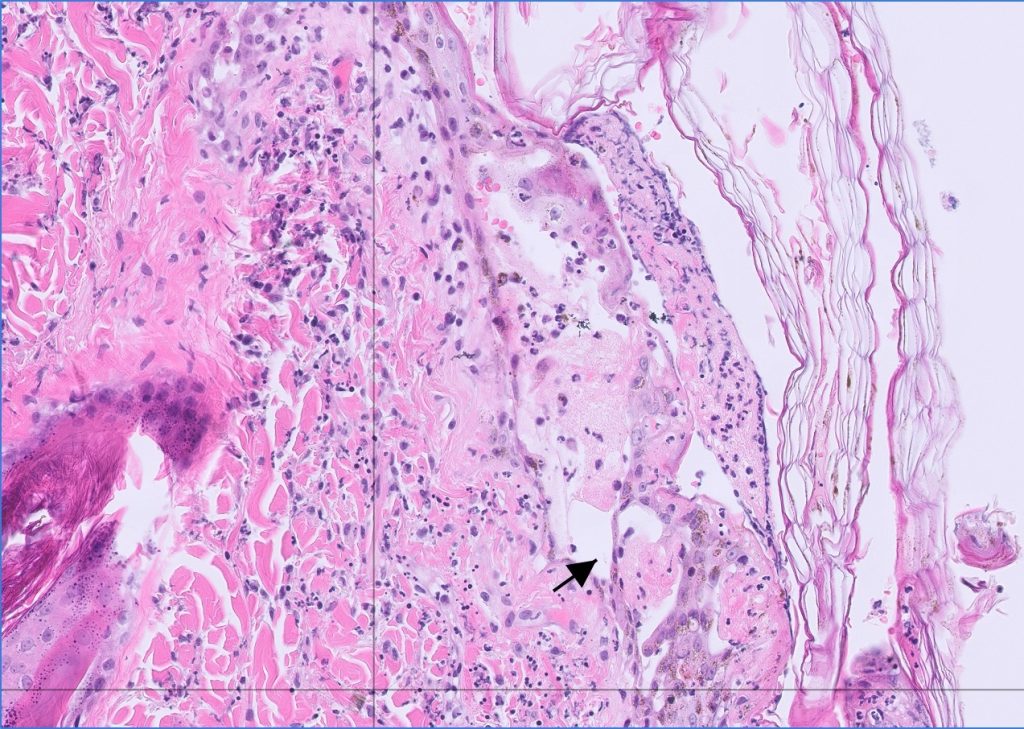
Culture from two sites rendered a methicillin-resistant Staphylococcus intermedius group organism.
Discussion
Initial differential diagnoses included hepatocutaneous syndrome (also sometimes termed superficial suppurative necrolytic dermatitis (SSND) but linked to a vacuolar hepatopathy or pancreatic tumours in a range of breeds), bullous or vesicular immune-mediated diseases, or a severe pyoderma. However, the presence of liver enzyme changes suggested SSND or hepatocutaneous syndrome should be considered, and an abdominal ultrasound ruled out typical causes of the latter. Instead, gall bladder dilation and inflammation in the region of the pancreas was suspected. Biopsies and further workup were declined.
SSND is often associated with the use of a shampoo and is thought perhaps to be a type of adverse drug reaction, although no shampoo was used on the patient in this case. Affected dogs are often pyrexic, depressed and may have heart, liver or lung lesions indicating systemic inflammation. The skin lesions start as erythematous papules or plaques, which crust or ulcerate, and are found mainly on the trunk although pinna lesions can be prominent. Some affected dogs will die.
The current patient was treated with enrofloxacin to manage the MRSI and a low dose of prednisone for anti-inflammatory effect; no heart or lung lesions had been found, but at the time of writing he still had a hepatopathy.
Acknowledgements to Silverdale Vet Hospital at Animates for this case.

